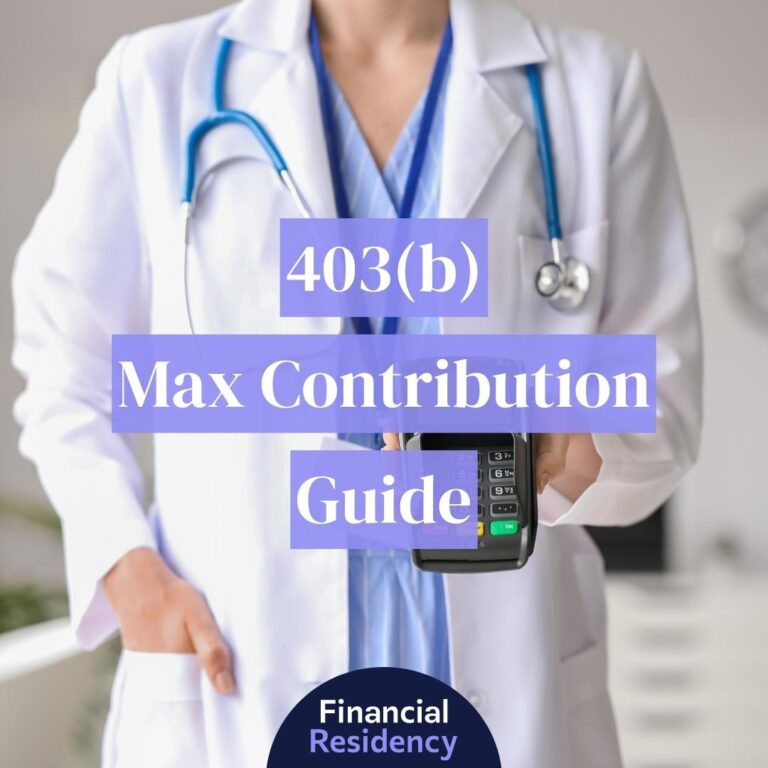Before getting into the details of tax loss harvesting, I wanted to take a moment to say, “Thank you!”
That’s what I want to say to all the physicians currently serving our communities in their time of need.
There are a lot of busy physicians who are sacrificing time spent with their own families and putting aside their own personal safety to take care of patients.

You are the unspoken heroes who will help numerous families cope with this newest health threat.
But we’ll also take a minute to appreciate physician spouses.
It takes someone strong to provide support under the usual conditions that physician families live under. However, these are exceptional times and it takes an exceptional spouse to deal with them.
I’d also like to take the time to reassure you about the markets.
They experience volatility when things are uncertain, but it’s not the time to panic. It’s not the time to sell everything and change everything over to cash or make any tweaks to your portfolios or allocations. Don’t stop investing in your 401k.
It’s never a good idea to do anything quick, especially sudden decisions surrounding your portfolio.
So hold on…this too shall pass!
Avoiding A Wash Sale
Are you concerned about tax-loss harvesting and about how to avoid a wash sale?
Tax-loss harvesting can be confusing and it might leave you with a mess if you do it wrong. You must utilize tax-loss harvesting if you want to manage your investments in an efficient manner.
Let’s get your investments on track and dig deep into the ins and outs of tax-loss harvesting.
Getting Started
We will look at a few key points:
- What is tax-loss harvesting and why we do it
- What is a wash sale and how to avoid it
- And how to get the most out of tax-loss harvesting
There are several benefits to harvest losses in your taxable account.
You’ll need to focus on the difference between tax rates. This would be ordinary income, long term, and short term capital gains. Then looking at how much you have saved in taxes and compounding that over your investment time horizon.
Does that sound complicated?
We’ll simplify it so that you’ll be able to do one of these two things.
- You’ll be able to successfully tax loss harvest in your own accounts.
- You will have a much better understanding of what your advisor is (or should) be doing when it comes to managing your investments.
What is tax-loss harvesting and why do we do it?
Tax-loss harvesting is really an advantage of having an individual or joint taxable brokerage account.
That’s very specific because tax-loss harvesting doesn’t apply to an IRA or a different tax-sheltered account.
Tax-loss harvesting is the act of selling one security and buying another, taking advantage of the paper loss in the security that has declined in value and then purchasing a security that is highly correlated but is not “substantially identical”.
Note: Those last words are very important and I’ll dive deeper into that information in a bit.
You don’t have to actually buy back immediately and can choose to wait 31 days until you buy back in, but most will want to buy back in with the funds they received from the security that had declined in value so you don’t miss a potential increase in prices.
The amount of any loss realized in a taxable account will first be used to offset any capital gains (if you had any) in the same calendar year. Any remaining losses will be deducted from ordinary income when you file your income taxes, up to $3,000 per year. This would yield roughly $1,000 tax savings for the typical attending. You may be thinking, well I have more than $3k in losses, can I take them all this year.
You can’t.
However, all is not lost. If you have more than 3k losses, you can carry forward those losses into future tax years to get the benefit there. So if you had $30k in losses that for some reason you wanted to take now and didn’t have any capital gains to offset, you would get $3k loss against your ordinary income for a total of 10 years. That’s not something I recommend, I’m just illustrating a point.
Typically, it means you’ll offset any losses, whether short-term or long-term, with other short-term or long-term gains.
Let’s clarify with a quick definition: short-term capital gains or losses are determined by the net profit or loss you have when selling an asset that was owned for less than 12 months.
Long term would be anything longer than 12 months.
Losses on your investments are first used to offset capital gains of the same type.
If you have an overall net capital loss for the year, you can deduct up to $3,000 of that loss against other kinds of income, including your salary and interest income.
Your excess net capital loss can be carried over to subsequent years to be deducted against capital gains and against up to $3,000 of other kinds of income.
What is a wash sale and how do you avoid it?
This can be complicated!
Essentially a wash sale is a rule that postpones losses if you buy “substantially identical” securities within 30 days before or after the sale.
When a wash sale occurs, the loss is disallowed. Now the slightly good news is that when that happens, your cost basis moves up.
When you go to sell it again, assuming, of course, you don’t have another wash sale, that you will take the loss. The bad news is that the loss in the current year is disallowed.
The last thing you want to do is have your spouse buy shares of the same fund you just sold. That would result in a wash sale as the security is substantially identical. Also, it doesn’t work if you sell it and then try to buy it in your IRA.
I’m sure a few of you were thinking about that! But don’t even think about it!
Now, let’s break this down to a few examples. I want to make sure that you understand wash sale rules so you mangle this part of the process.
Here is an example (It’s not meant to be taken as investment advice):
On April 1st, I bought one share of the iShares Total Stock Market ETF. I paid $100 for that one share of that ETF.
On April 15th, I had a really bad tax day, so I decided that I no longer want to own that ETF and decide to sell it. I sell it for $90. Yes, it’s a bummer, but I want to sell and I take that $10 loss.
This is allowed if I decide to not go buy substantially identical security to the iShares Total Stock Market ETF within the next 30 days. If I decided to buy back in on April 20th for 1 share, then my loss is disallowed.
I know, complicated…right?
But we’re gonna make it even more difficult. Most people don’t just buy one share of something and don’t just purchase one at a time, so lets up our game a bit.
On April 1st, I bought 10 shares of the iShares Total Stock Market ETF. I paid $100 per share for those 10 shares of that ETF. On April 5th, I go and buy another 10 shares at $95 per share. Now I own 20 shares, all is well. Now remember what I said about wash sales, you can’t buy “substantially identical” securities within 30 days before or after the sale.
On April 15th, I had a really bad tax day, so I decided that I no longer want to own that much of that ETF and decided to sell it 10 shares and I sold it for $90. If I don’t sell my entire position and liquidate all 20 shares, I will violate the rules and a wash sale will occur, my losses will be disallowed and the loss will be added to the cost basis of my remaining 10 shares.
 Hopefully, you’re still with me and that made some sense. You may need to read that part several times. The easiest way to avoid is to buy “substantially identical” securities.
Hopefully, you’re still with me and that made some sense. You may need to read that part several times. The easiest way to avoid is to buy “substantially identical” securities.
Another example (not investment advice): that would be like owning iShares Total Stock Market ETF, selling it and buying Vanguard Large-Cap ETF. These are not substantially identical, it’s not the same fund and would be a potentially viable option despite not having mid or small-cap exposure.
While you might think that you could sell the iShares Total Stock Market ETF and go buy the Vanguard Total Stock Market ETF, that it would work because its two separate companies, and honestly, I don’t think there is any real guidance from the IRS on this, I think that they are “substantially identical” and wouldn’t be allowed.
There are some obvious differences, but the idea behind the “substantially identical” securities is to signal that you are changing your position within the market. Buying a near-identical index fund, one that I would say isn’t substantially different, doesn’t seem to fit that bill.
How to get the most out of Tax-Loss Harvest
You want to get the most out of Tax-loss harvesting.
Sometimes you have some legacy positions that you might not want to keep. We see this a lot when clients come from other advisors that have purchased a bunch of crap that they shouldn’t have ever owned in the first place.
It would be reckless to just go and sell those positions and not think about tax consequences. Sure, it would be nice to purge the bad investments and move on.
However, We’ll use tax-loss harvesting to offset some of the gains in those positions with losses as they occur. Eventually, you will rid yourself of the bad investments and be left with awesome investments that fit your investment criteria.
In order to not accidentally violate the wash sale with tax-loss harvesting, make sure to turn off dividend reinvestments. It would be horrible to take the time and effort to go through this, only to have a dividend reinvestment mess it up.
Make sure to take into consideration trading costs as you look at tax-loss harvesting. Now we custody at TDAI, so we don’t really have to worry about that because our portfolios are built with as many NTF funds as possible.
Also, if you are on the Vanguards platform you don’t have to worry about this. Something to keep in mind and the smaller the portfolio, the more the fees will matter.
This about how much is enough to make it worthwhile. What threshold makes the trade worth it, especially if you want to own that fund anyway.
You need to think through the opportunity cost.
That would be sitting in cash (which is substantially easier and less confusing and would save some time) vs owning a different fund and maintaining time in the market. This is a personal decision, but for clients, we get the money working as quickly as possible so that’s something to consider.
Tax-loss harvesting might throw you off balance, depending on your risk tolerance.
It’s an easy fix if you have new money coming in the following month. Yet, not so easy if you aren’t actively contributing to the account or if you are in withdrawal mode.
Hopefully, this was helpful and valuable.
If you know of another physician that would benefit from hearing this, please send it to them!
Our goal is to help other physicians and their families feel more confident in managing their personal finances (including paying off student debt) and decrease burnout (perhaps, by growing a side hustle for future financial independence that allows you to have options).
There are about a million physicians in the US, we are only reaching about a half a percent of them. That means there’s a huge portion of physicians who are heading down the path to debt and desperation.
Let’s save them from that!
Let them know about us because I’d love for our community to continue to grow.
I’ve also been writing a book to help you navigate your finances! Sign up to be notified about our new book releasing next month here: www.financialresidency.com/book






